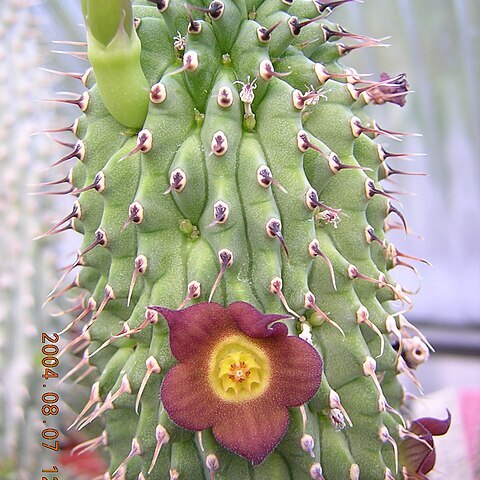Like H. alstonii but plant up to 0.5 m tall, stems brown-green with weak spines, flowers 1-3 per cluster, corolla shallowly campanulate, 12-20 mm diam., inside reddish brown and with scattered papillae, tube broadly saucer-shaped, lobes 4-6 x 5-7 mm, outer corona lobes cupular, deeply indented in middle.
A shrub. It keeps growing from year to year. It grows 30-40 cm high. The stems are succulent and spiny. They are 4-7 cm thick. They have spines 4-12 mm long. The flowers are small. There are some subspecies. The fruits are double follicles. They have many fluffy seeds.

